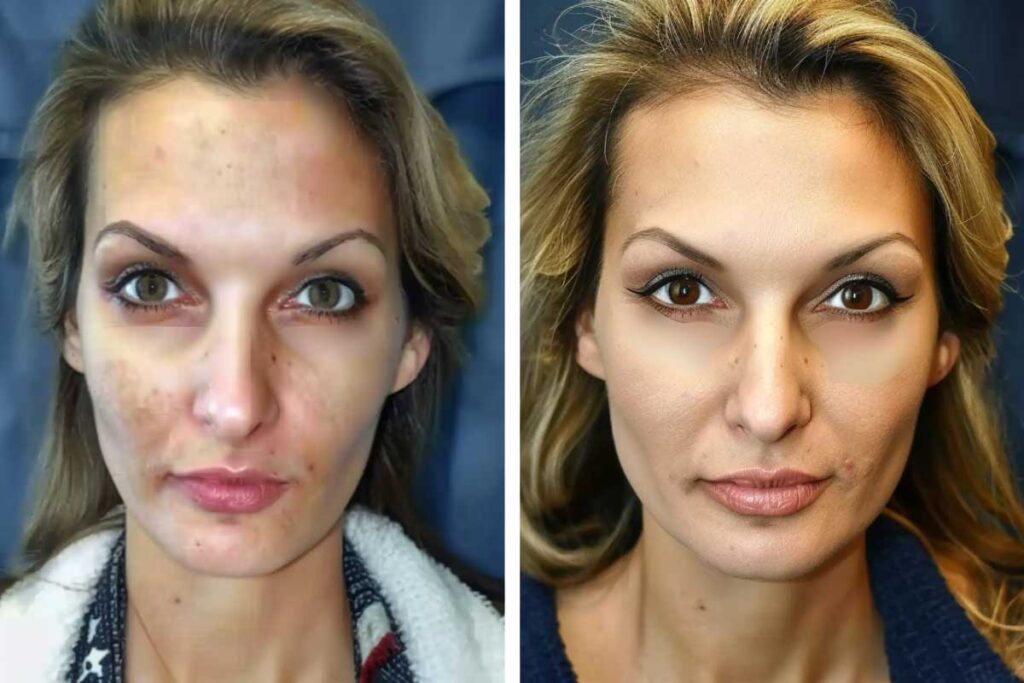Understanding “Ozempic Face”: Causes and Prevention
“Ozempic face” is a term used to describe common side effects of the type 2 diabetes medication, semaglutide (Ozempic). These side effects can include sagging and aging of the facial skin. Doctors may suggest lifestyle modifications or facial fillers to manage these skin changes.
What is Ozempic?
Ozempic, produced by Novo Nordisk, is a medication designed for treating type 2 diabetes in adults. It comes in the form of an injectable pen, which should be used once a week under the skin of the thigh, upper arm, or abdomen. However, some people use it off-label for weight loss, causing high demand and limited availability in the U.S.
What is “Ozempic Face”?
The term “Ozempic face” was coined by Dr. Paul Jarrod Frank, a cosmetic and celebrity dermatologist, to describe the facial changes observed in patients taking the medication. These changes include:
• Increased signs of aging, such as more lines and wrinkles
• Loss of facial fat, leading to loose and sagging skin
• A hollowed-out appearance
How Does Ozempic Affect the Face?
Semaglutide, the active ingredient in Ozempic, belongs to a class of medications known as incretin mimetics. These drugs help the pancreas release insulin when blood glucose levels are high and make individuals feel fuller, thus reducing calorie intake. While effective, Ozempic can cause rapid weight loss, which is often more noticeable in the face due to the loss of protective fat.
Other Possible Side Effects of Ozempic
In addition to facial changes, Ozempic may cause side effects such as:
• Nausea
• Vomiting
• Diarrhea
• Flatulence
• Constipation
• Stomach ache
• Abdominal pain
• Fatigue
• Injection-site reactions
Rare but severe side effects include vision changes, kidney problems, gall bladder disease, severe allergic reactions, increased risk of thyroid cancer, low blood sugar, and pancreatitis.
Preventing Facial Side Effects
To minimize facial side effects, consider these steps:
• Reducing the dosage: Consult your doctor about adjusting your dose.
• Switching medications: Explore alternative treatments with your healthcare provider.
• Hydration: Drink 1–2 liters of water daily.
• Protein intake: Maintain a protein-rich diet.
• Dermatological fillers: Consider fillers to restore volume.
• Lifestyle modifications: Implement changes to maintain a healthy weight.
What Happens After Stopping Ozempic?
If you stop taking Ozempic, it can take about five weeks for the drug to clear from your system. You might experience increased cravings, an absence of side effects, and blood sugar spikes. Weight gain is also a possibility.
When to Contact a Doctor
Contact a doctor if you experience severe side effects. Watch for symptoms such as difficulty swallowing, a lump or pain in the neck, wheezing, shortness of breath, or a worsening hoarse voice, as these could indicate thyroid issues.
Frequently Asked Questions
Does Ozempic change your face?
Yes, Ozempic can cause rapid weight loss, leading to a gaunt appearance and more visible facial lines and wrinkles.
What does an Ozempic face look like?
It often includes more lines and wrinkles, loose and sagging skin, and a hollowed-out appearance due to fat loss.
Does Ozempic age your skin and your face?
Rapid weight loss can cause the skin to lose elasticity, leading to wrinkles and lines typically associated with aging.
Summary
Ozempic is an effective treatment for type 2 diabetes, but it can cause rapid weight loss and associated facial side effects, known as “Ozempic face.” It’s essential to use Ozempic only as recommended by a doctor. If you experience severe side effects, consult your healthcare provider. Stopping the medication may lead to weight gain and other changes, but understanding and managing these effects can help maintain your health and appearance.
More resources:
- What Does Ozempic do to Your Face? What is Ozempic Face?
- Is Ozempic Face Permanent? Effects, Weight Loss & Changes
- Indiana Mom Dies from Water Intoxication—What You Need to Know
- Why You Start Waking Up Earlier as You Age: A Simple Explanation
- Today I Learned About Warning Strokes and Their Key Symptoms






